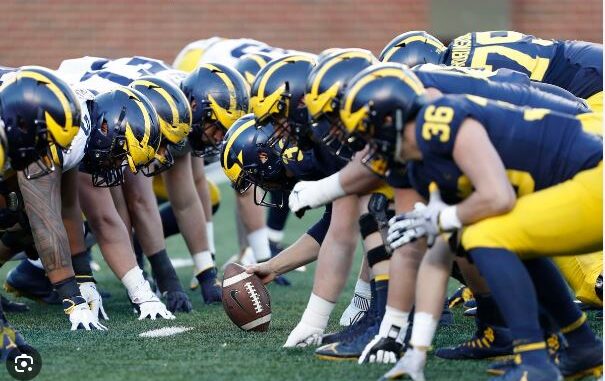
Not too long ago, the tides in the Ohio State-Michigan football rivalry favored Ohio State, but a transformative approach known as the “Beat Ohio Drill” has shifted the narrative. Jim Harbaugh, the head coach of the Michigan Wolverines, recognized the need to strategically focus on their arch-rivals, the Buckeyes, leading to the inception of a highly intense and physical drill dedicated solely to preparing for matchups against Ohio State. Over time, this drill has evolved in response to the team’s changing opponents and challenges. Following victories against Ohio State, the Wolverines expanded their focus to include the Georgia Bulldogs after the 2021 College Football Playoff loss. This year, the formidable Alabama Crimson Tide has been added to the mix. The “Beat Ohio Drill” has become a critical component of Michigan’s preparation for facing the toughest teams in the country.
While the concept of a dedicated drill for opponent preparation is not novel in football, Harbaugh and the Wolverines have elevated the intensity and purpose of the “Beat Ohio Drill” to meet the demands of facing formidable adversaries. Michigan offensive coordinator Sherrone Moore shed light on the distinctive features of this drill, emphasizing its live-tackle nature. Unlike conventional 9-on-7 drills, Michigan’s approach involves full-contact tackling, a decision motivated by a desire for increased safety and effectiveness. According to Moore, the live-tackle aspect encourages players to approach the drill with greater commitment and intensity, fostering a more physical and decisive style of play. The cacophony of pads colliding, loud music, and the palpable sense of violence contribute to an atmosphere that embodies the essence of physicality, a crucial element in Michigan’s strategy against elite teams.
Moore explained, “Everybody does 9 on 7, but I think the big piece for us was making it live tackle. It was a big decision — actually you find from a safety standpoint it’s actually better than doing what people call the thud just because you have less injuries.” The live-tackle format ensures that players fully commit to the drill, eliminating hesitancy and fostering a more authentic simulation of in-game scenarios. The physicality at play during the “Beat Ohio Drill” serves as a crucible, molding the team’s identity and contributing to their success over the past couple of years.
Michigan’s senior offensive guard, Trevor Keegan, provided insights into the nature of the drill, likening it to an intensely violent and aggressive movie. In describing the drill, Keegan emphasized that it transcends conventional football techniques, focusing on the sheer determination to defeat the opponent directly in front. He highlighted the drill’s role in cultivating the team’s toughness, noting that it goes beyond traditional football practices, resembling a form of smashmouth football where players face their adversaries head-on. Keegan reminisced about the first iteration of the “Beat Ohio Drill” during spring ball in 2021, drawing parallels to iconic scenes from movies like “300” or depictions of the Battle of Sparta. The intensity of the drill left an indelible impact on him, and he attributes much of the team’s success to the transformative nature of this specific practice.
The effectiveness of the “Beat Ohio Drill” is evident in Michigan’s performances against Ohio State. The drill has become a cornerstone of the team’s strategy, shaping their identity and contributing to their triumphs. Now, as Michigan faces the powerhouse that is Alabama, the team looks to leverage the physicality, toughness, and resiliency instilled by the “Beat Ohio Drill” to overcome the challenges posed by an elite opponent. The drill, which has proven its worth against Ohio State, is now a crucial element in Michigan’s arsenal as they aim to extend their success to the national stage against other football powerhouses like Alabama.

Leave a Reply